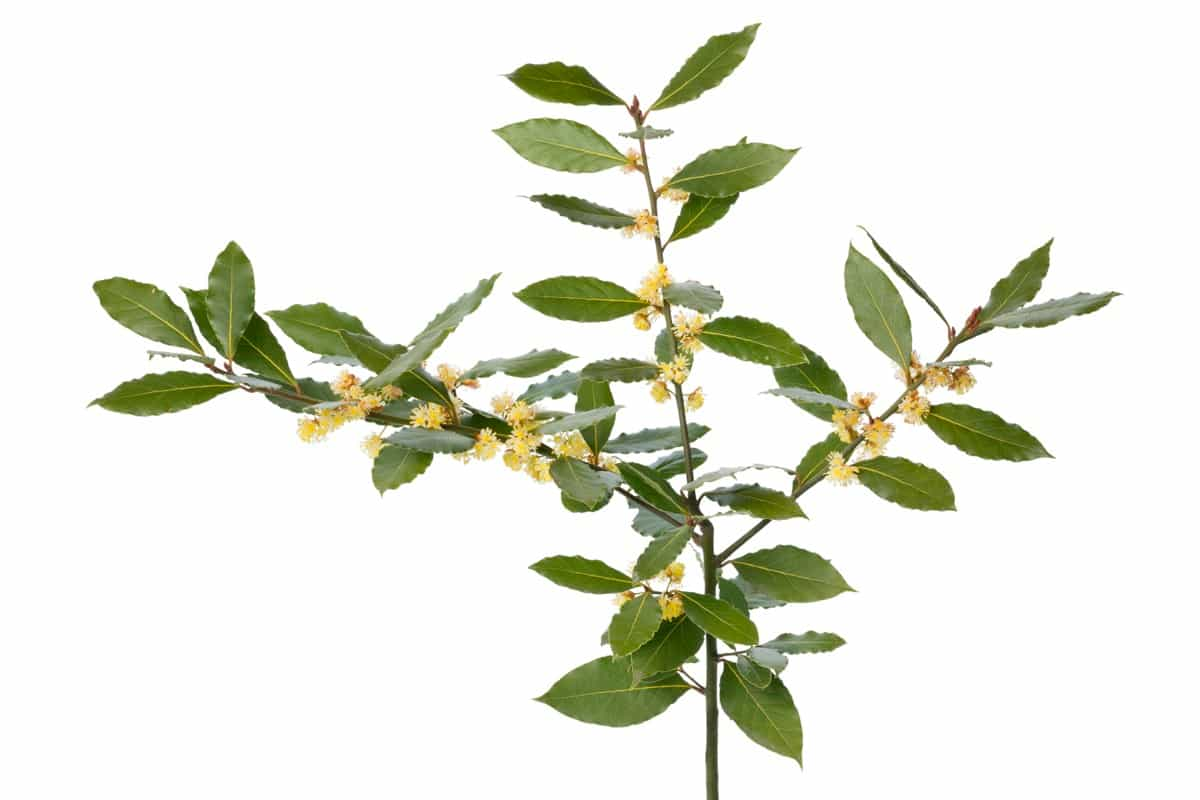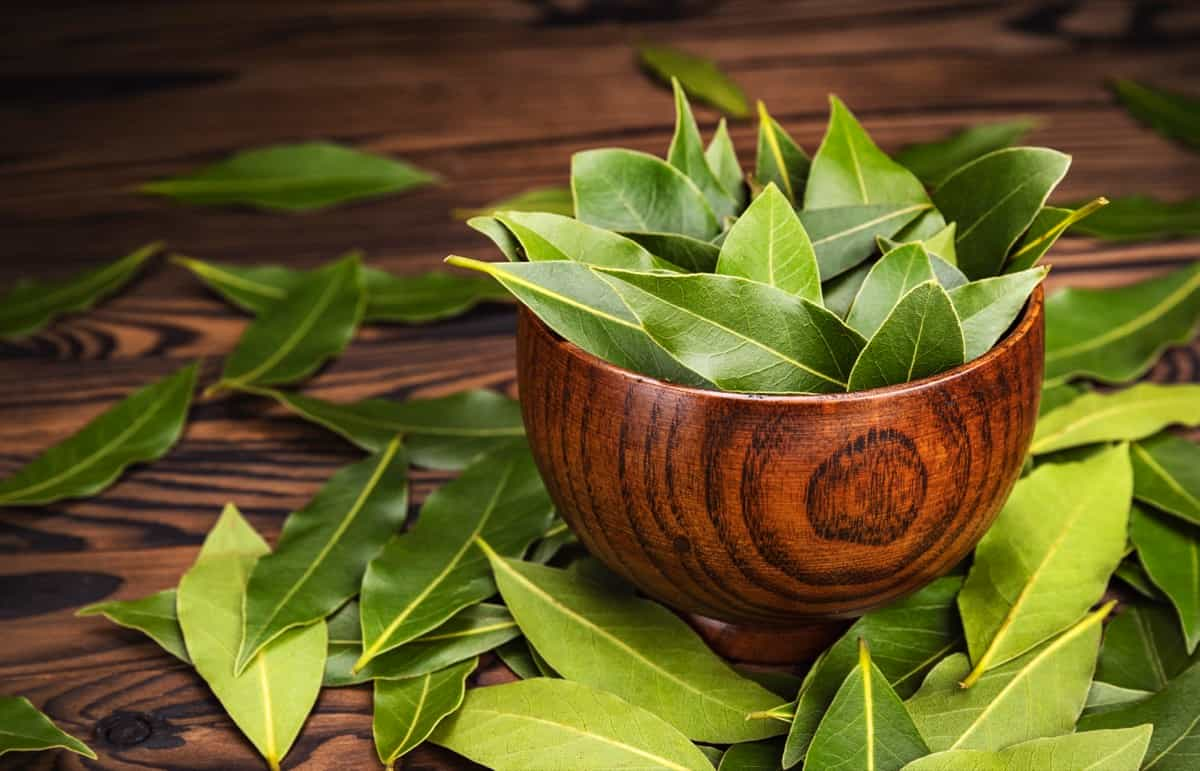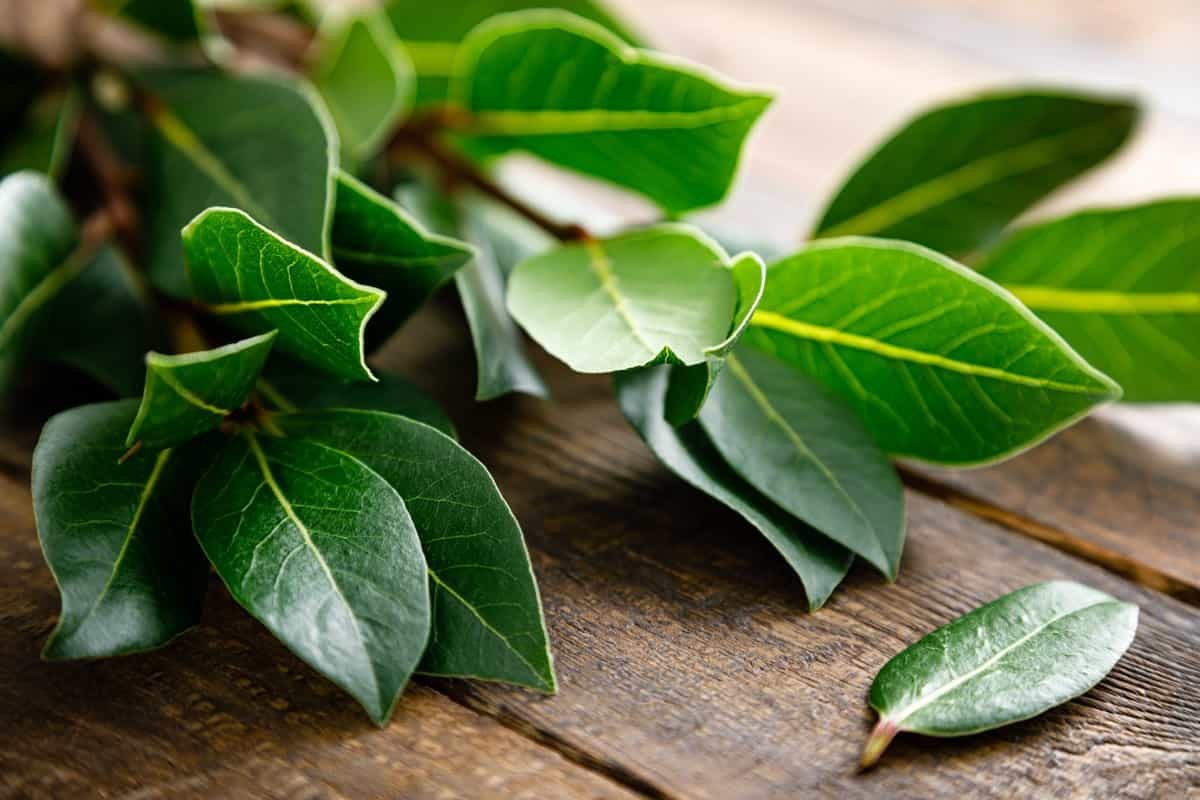Bay leaves are not just a popular culinary herb; they also have a long history of being used for their medicinal properties. However, bay trees can be susceptible to pests that affect their health and the quality of the leaves they produce. While chemical pesticides are commonly used to control pests, many people prefer natural and organic methods to protect the surrounding environment and avoid potential health risks associated with synthetic chemicals. In this guide, we’ll explore how to control bay leaf pests naturally, using organic treatments to get rid of them effectively.

How to Control Bay Leaf Pests Naturally
Understanding the Bay Leaf Pests and Their Impact On Bay Leaf Plants
Bay leaves are susceptible to various pests, including aphids, psyllids, mites, and thrips. Aphids feed on sap, causing leaf distortion, while psyllids create tiny, blister-like galls. Mites, nearly invisible to the naked eye, damage leaves by sucking cell contents. Thrips, slender insects, scrape leaf surfaces, and leave silvery scars.
These pests hinder plant growth and reduce bay leaf quality. Integrated pest management, involving regular inspection and natural predators, can help control infestations. Understanding each pest’s characteristics is crucial for effective prevention and treatment, ensuring healthy bay leaf plants.
How to Identify Common Bay Leaf Pests
Identifying common bay leaf pests is vital for timely intervention. Aphids, small and pear-shaped, cluster on leaves, often attracting ants. Psyllids create peculiar galls resembling blisters, while mites cause stippling and webbing. Thrips, slender and agile, leave silver scars on leaves.
Regular inspection is key; look for distorted leaves, discoloration, or tiny moving specks. Use a magnifying glass for mites. Consider natural predators like ladybugs and lacewings for biological control. Early detection allows for targeted remedies, such as insecticidal soap for aphids or neem oil for mites. Vigilance and proactive measures ensure a thriving bay leaf garden.
Create a Pest-Free Environment for Bay Leaf Plants
Pests like aphids, mites, and thrips can compromise the quality of bay leaves, affecting flavor and appearance. Implementing preventive measures such as regular inspection, proper spacing between plants, and good airflow can reduce the risk of infestation. Promoting beneficial insects like ladybugs and predatory mites also establishes a natural balance in the ecosystem, controlling pest populations.
In case you missed it: How to Control Star Anise Pests Naturally: How to Get Rid of Them with Natural and Organic Treatment

Choosing well-draining soil and avoiding over-fertilization further strengthens the plants, making them less susceptible to stress-related pest attacks. A pest-free environment fosters robust bay leaf growth and enhances overall garden resilience.
Best Companion Plants That Deter Bay Leaf Pests
Marigolds release compounds that repel nematodes and deter aphids, while basil is known to repel mosquitoes and has antimicrobial properties. Planting chives can discourage aphids, and thyme is a natural insect repellent. Nasturtiums attract aphids away from bay leaves, serving as sacrificial plants. Additionally, lavender and rosemary emit scents that repel various pests. Incorporating these companion plants enhances the overall garden aesthetics and contributes to a natural pest management strategy, promoting a harmonious and thriving environment for bay leaf plants.
Using Beneficial Insects for Pest Control in Bay Leaf Gardens
Ladybugs, voracious aphid predators, keep populations in check. Green lacewings devour aphids, mites, and other small insects. Predatory wasps parasitize caterpillars and harmful larvae. Introducing these allies enhances biological pest control, reducing the need for chemical interventions.
Encourage their presence by planting nectar-rich flowers, providing shelter, and avoiding broad-spectrum pesticides. By fostering a diverse and balanced ecosystem, beneficial insects contribute to a resilient bay leaf garden, ensuring sustainable pest management while preserving the health of the overall plant environment.
Best Homemade Organic Sprays for Bay Leaf Pest Management
Neem oil, a potent insecticide, disrupts pests’ life cycles and acts as a repellent. A mixture of garlic and pepper spray serves as a broad-spectrum deterrent for various pests. Citrus oil extracts, like lemon or orange, repel aphids and ants. Combine these ingredients with water and a few drops of dish soap to enhance adhesion. Regularly apply these homemade sprays, focusing on the undersides of leaves, to deter pests and maintain a thriving bay leaf garden without compromising environmental sustainability.
Neem Oil is a Natural Solution for Bay Leaf Pests
Neem oil is a natural pesticide for controlling pests in bay leaf gardens. It is derived from the neem tree and possesses insecticidal, antifungal, and antibacterial properties. Neem oil disrupts the life cycle of pests like aphids, mites, and thrips while acting as a repellent. Its eco-friendly nature makes it a preferred choice for organic gardening. Dilute neem oil in water and apply it to bay leaves, targeting both sides of the foliage. Regular use tackles existing pest issues and serves as a preventive measure, promoting a healthier and pest-resistant environment for bay leaf plants.
In case you missed it: How to Control Cardamom Pests Naturally: How to Get Rid of Them with Natural and Organic Treatment

Use Garlic and Onion Spray for Repelling Pests from Bay Leaf Plants
Garlic and onion spray provides a natural and aromatic solution for repelling pests from bay leaf plants. Rich in sulfur compounds, both garlic and onions act as potent insect deterrents. To create the spray, blend garlic cloves and onion bulbs with water, strain, and add a few drops of dish soap for adhesion.
This pungent mixture disrupts pests’ feeding and reproductive habits, particularly aphids and mites. Regularly applying this homemade organic spray on bay leaves helps create a protective barrier, discouraging pests and contributing to a pest-resistant garden without synthetic chemicals, fostering a thriving bay leaf ecosystem.
Use Essential Oils for Bay Leaf Pest Control
Harnessing the power of essential oils is a natural and aromatic method for bay leaf pest control. Oils like neem, eucalyptus, and tea trees possess insecticidal and repellent properties. Mix a few drops of these oils with water and mild soap to create a DIY spray. Neem oil disrupts pests’ life cycles, while eucalyptus and tea tree oils act as deterrents. Regularly apply the spray to bay leaves, focusing on the undersides. This organic approach combats existing pests and provides a fragrant shield, promoting a healthier and pest-resistant environment for bay leaf plants.
In case you missed it: Neem Oil for Controlling Whiteflies in Your Garden: A Natural and Organic Solution

Conclusion
In conclusion, effectively managing bay leaf pests naturally involves a combination of preventive measures and organic treatments. Regular inspection, proper pruning, and maintaining a healthy environment are essential. Utilizing natural remedies like neem oil and garlic spray or introducing beneficial insects can aid in pest control without resorting to harmful chemicals. By embracing these eco-friendly approaches, you can protect your bay leaf plants while promoting a sustainable and pesticide-free gardening experience.
- Deworming Schedule for Dogs/Puppies: A Beginners Guide
- How to Prevent and Control Parasites in Goats
- Beneficial Insects in Pest Management
- Natural Solutions for Pest Control in Flower Gardens
- Types of Fungicides Used in Agriculture
- Common Issues in the Fruit Development Stage of Pomegranate Farming
- Fruit Development Issues in Papaya: Easy Solutions and Treatment
- Soil-Borne Diseases and How to Protect Your Plants
- Practices to Prevent Disease Spread in the Garden